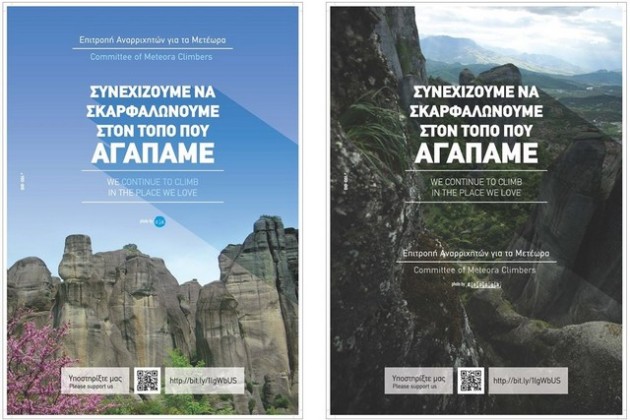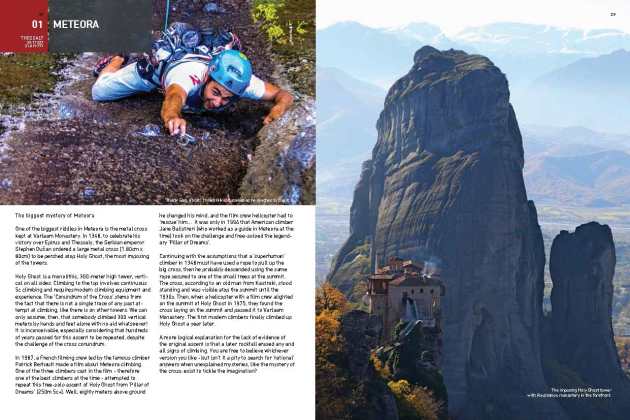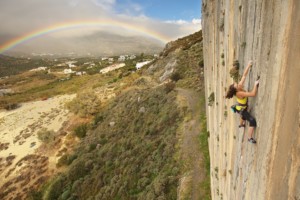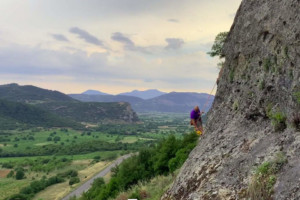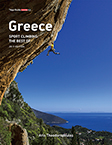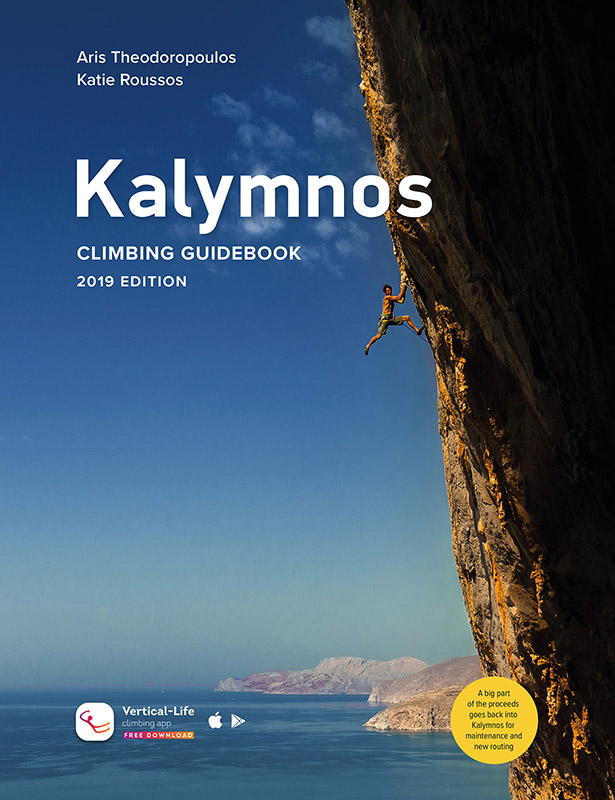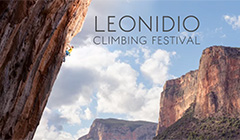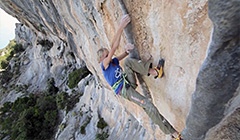It’s great to see climbers in Meteora again, thanks to two back-to-back climbing events coming up in a few days. After Kalymnos in 2006, this year on Sept 29-Oct 3 the Petzl RocTrip is coming through Meteora, a cluster of massive rock towers rising from the verdant plain of Thessaly in an almost mysterious and magical manner. On the weekend leading up to the RocTrip, the Hellenic Federation of Mountaineering and Climbing (EOOA) is hosting its 26th Greek Climbers’ Meetup on Sept 26-28, with events including a presentation of the history of Meteora, a discussion about access and prohibition issues, plus dinner and a film in addition to lots of climbing. Thankfully, the ridiculous (and unfounded) objections of the Greek Archaeology Council against the event didn’t faze the organizers, although some damage was undoubtedly done by the negative publicity. Either way, we hope the event is a success, because climbing in Meteora is a truly unforgettable experience.
There is a lot of good info on the RocTrip’s Meteora page, but if you are not familiar with Meteora here’s a quick rundown, along with a sample from the new Greece Sport Climbing guidebook:
SAMPLE: Greece Sport Climbing | METEORA
The conglomerate cliffs of Meteora feature nearly 800 single- and multi-pitch routes on towers, pinnacles and pillars. The peculiar nature of the rock, the otherworldly surroundings, and the ending of each route on a summit are some of the reasons why Meteora climbing is in a league of its own and it cannot–and should not–really compare with ‘ordinary’ sport climbing.
The texture of Meteora rock results from its unique mix of pebbles, cobbles and larger stones packed into a rock surface which feels like concrete but is, in fact, a mixture of sandstone and conglomerate. Oftentimes, cobbles have come loose from the rock to leave shallow holes in their place. At first it can be hard to trust these small, often downward-sloping pebbles as handholds and footholds, but you will gradually realize that they are solid – at least on popular routes, where rock is cleaner and more solid thanks to thousands of ascents. (Tip: don’t deviate from the line of the route!)
The climbing style is primarily balancy and slabby on crimpy pebbles. The only thing that changes as grades go up or down is the size of the cobbles and the angle of the cliff. Generally, the climbing is technical, pleasant, delicate, and not very athletic, except on very hard routes. Although most routes in Meteora are bolted face climbs, in many cases the character is mixed sport and trad. Pure trad pitches go up cracks or chimneys and require cams and nuts.
Meteora is a UNESCO World Heritage Site and the wider region belongs to the Natura 2000 network of protected areas.
Climbing in Meteora has been repeatedly threatened with prohibition in the recent past. The usual suspects–the Archaeology Council and the Orthodox Church–paired up in applying pressure to pass a law that will prohibit climbing and turn Meteora into a sterile monastic complex. After a failed attempt at prohibition in 2000, the pressure was renewed in 2014 and extends to other sports as well, like cycling, slacklining, air sports and even professional filming and photography.
The scores of climbers from all over the world who have visited Meteora over the years have been an integral part of this setting, and they have shown nothing but respect for this monument of nature and cultural heritage. We think a steady and increasing influx of climbers to Meteora is the only defense against the threatened prohibition. So we plan to be there, and hopefully you will, too.





